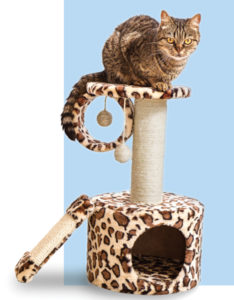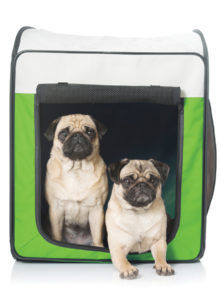It’s Training Cats and Dogs
02 Jul 2016
Shelters are often the last stop for naughty dogs and cats.
But it’s easy to train an animal to be its people-pleasing best, and as a pet owner, it’s your responsibility.
By Ruthanne Johnson We love our pets. We do. But think back to the time your furry friend ripped apart your shoes. Or your cat gouged claw marks in the couch. Along with the love they give, our pets can test our patience, right? Behavioral issues are actually among the top 10 reasons animals are relinquished to shelters, and some 6 to 8 million dogs and cats enter shelters every year. Not all hope is lost, however, for even the most challenging pets. Most times they’re just doing what nature intended—barking, scratching, chewing and going potty. It’s just up to us to kindly teach them our house rules. But first you need to understand the reasons behind their behavior, says Helena Kokes, a behavior consultant with the Humane Society of Boulder Valley. The solution could be as simple as redirecting your dog’s barking or enticing your cat to use a scratching post. Other behaviors may be more complex and need the help of an animal behavior specialist—or a veterinarian, if it’s medically related. We asked the experts to weigh in on a few of the most common pet behavioral problems.Here Kitty, Kitty, Kitty
You’ve probably heard the expression, “It’s like herding cats.” While it’s true that cats do pretty much whatever they want whenever they want, they’re not as hard to train as you think. Cats have learned to potty in toilets, walk on leashes and jump through hoops. Just look at YouTube if you doubt that. But we have to give cats reasons to do what we want. We have to entice, rather than demand, and make them think it’s what they want.Litter Box Avoidance
Reasons for behavior: Cats are naturally attracted to soft, sandy substrates for elimination, so the good news is there’s no need for house-training. But cats have bathroom preferences just like humans. Who’d want to potty in front of everyone or walk up three flights of stairs to do their business? And who hasn’t avoided a dirty toilet? “The litter box could be in the wrong location, the wrong kind of box, a dirty box or the wrong type of litter,” Kokes says. A new companion pet, health issues or changes in your routine can even factor in. Several of Kokes’ clients had cats that actually stopped using their litter box after being spooked by the washing machine’s spin cycle (their litter box was in the laundry room).
Scratching
Reason: Cats scratch to sharpen their claws, shed their nails’ outer sheath, get a good stretch, greet someone or mark their territory. They also do it because it feels good. “It’s something they need to do,” Wood says. Destructive scratching can be solved by providing “legal” opportunities. You just have to tap into your cat’s preferences to get it to use those surfaces.
Counter Surfing
Reason: Cats are predators and incredibly agile. They also love to explore. “So it’s normal for them to get up on things, under things, behind things and to explore every square inch of their space,” Kokes says. Some cats climb to get closer to their humans. Others like to find high perches where they can oversee. Or they could be scrounging for food.
Who's A Good Doggy?
Bow-Wow Boo-Boos

House Soiling
Reason: Dogs don’t like to potty where they eat or sleep. “Basically, in their core living space,” Kokes says. But the rest of the house is their potty oyster, if they haven’t been properly house-trained. Sometimes, accidents happen because they just can’t hold it as long as we expect. If house soiling is something new, it could be medically related and a checkup is in order. Overly anxious dogs will also soil when they’re stressed. Solution: If you work long days, consider hiring a dog walker or taking your pet to doggy daycare. If the house soiling is occurring when you’re there, start by keeping your pet close at all times. Use a crate or leash to limit free wandering. Take them outside on a schedule: after waking up, eating and playing. “When they eliminate outside, reward them right away with a treat,” Kokes says. An animal behaviorist can help with anxiety-driven house soiling.The Big Chew
Reason: Chewing is an exploratory behavior, especially for puppies and young dogs. Certain breeds such as Labs and other retrievers love to grab things in their mouths. “It’s part of a dog’s nature to chew,” Kokes says. “Basically, it’s a calming activity that just feels good.” Dogs also chew to relieve boredom and stress if they’re left alone for too long, or not getting enough stimulation.
Sir Barks-a-Lot
Reason: Barking is a dog’s vocal form of communicating. Different barks serve different functions. “The barking could be in greeting,” Wood says, “or sounding the alarm.” It could indicate distress or alert you to something they want, like breakfast or play. It can also be from anxiety, boredom or social isolation. “Dogs without the companionship of people or another animal during the day can be a big reason for barking,” Kokes says.
Ruthanne Johnson is staff writer for All Animals, published by the Humane Society of the United States.












